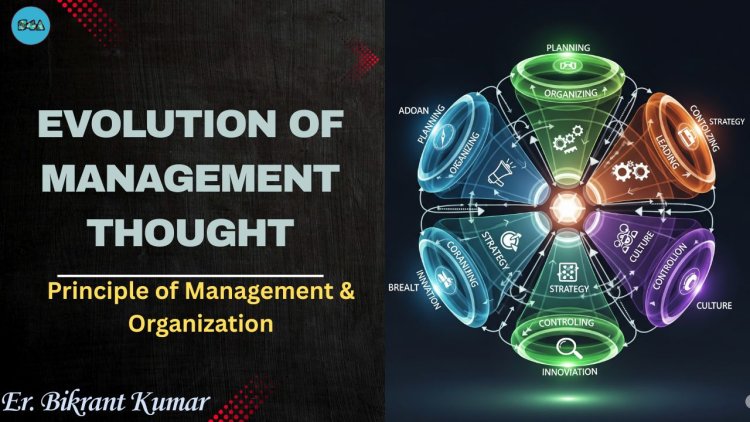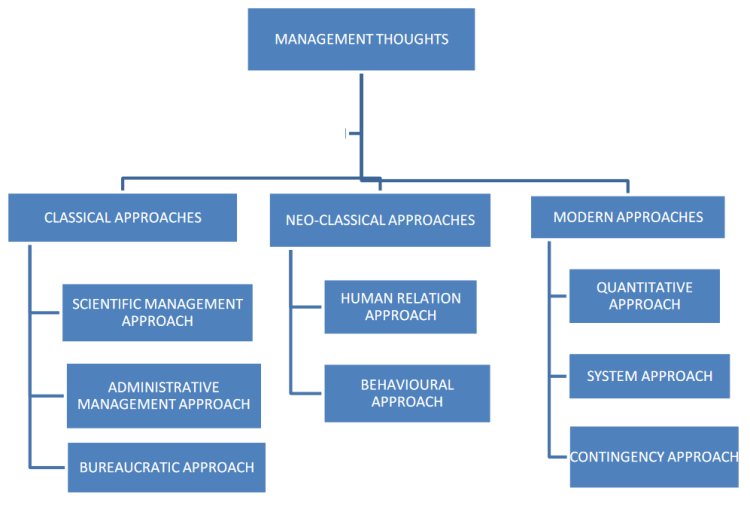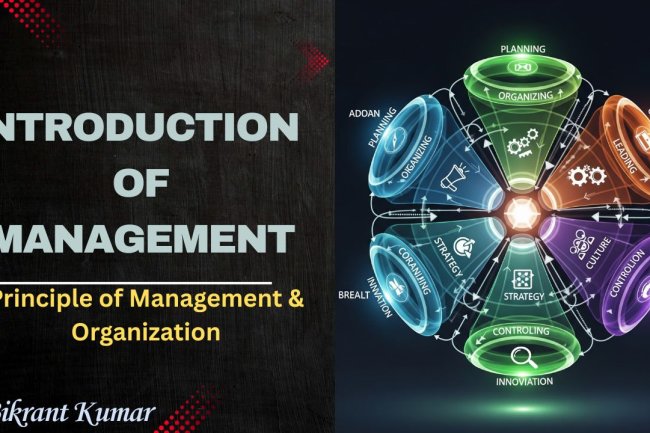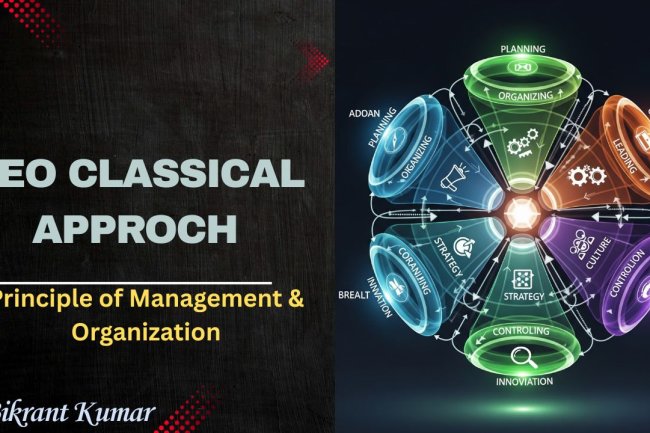Evolution of Management Thought
Principle of Management

Evolution of Management Thought
Management of Thought to the evolution of management ideas, theories, and practices over time — how people have thought about managing people, resources, organizations, and work throughout history.
It is also called Evolution of Management Thought or Development of Management Theories.

Duration & Timeline:
Management thoughts have evolved in 5 major phases:
|
Era |
Period |
Focus |
|
1. Pre-Scientific Management |
Before 1880 |
Trial-and-error, no formal system |
|
2. Classical Theory |
1880–1920 |
Structure, efficiency, productivity |
|
3. Neo-Classical Theory |
1930–1950 |
Human relations, motivation |
|
4. Modern Theory |
1950 onwards |
Systems, environment, flexibility |
|
5. Contemporary Approaches |
1980–Now |
Innovation, culture, digitalization |
Classical Management Thought
- Period: 1880–1920s
- Key Thinkers:
- Frederick Taylor (USA) – Scientific Management
- Henri Fayol (France) – Administrative Theory
- Max Weber (Germany) – Bureaucracy
- Focus:
- Task efficiency
- Clear roles
- Authority, structure, rules
- Example:
A factory sets fixed working hours, uses machines efficiently, and assigns specific tasks to each worker.
Neo-Classical (Human Relations) Thought
- Period: 1930s–1950s
- Key Thinkers:
- Elton Mayo (Australia) – Hawthorne Experiments
- Abraham Maslow – Hierarchy of Needs
- Douglas McGregor – Theory X and Y
- Focus:
- Employee motivation
- Social and emotional needs
- Communication and leadership
- Example:
A call center starts celebrating birthdays, asking for employee feedback, and seeing improved performance.
Modern Management Thought
- Period: 1950s onwards
- Key Thinkers:
- Ludwig von Bertalanffy – Systems Theory
- Fiedler, Woodward – Contingency Theory
- Dantzig – Quantitative Management
- Focus:
- Systems, environment
- Data-based decision making
- Flexibility and technology
- Example:
Amazon uses real-time data and systems to manage delivery, warehouses, and customer satisfaction.
Contemporary / Modern-Day Approaches
- Period: 1980s–Present
- Key Concepts:
- Knowledge Management
- Total Quality Management (TQM)
- Lean Thinking
- Agile Management
- Digital Transformation
- Focus:
- Innovation, flexibility, customer focus
- Employee engagement and creativity
- Tech-driven decision making
- Example:
A software company uses Agile Methodology to develop apps in quick, collaborative cycles.
Objective of Management Thought:
- Improve productivity and efficiency
- Enhance employee satisfaction and motivation
- Adapt to technological and environmental change
- Guide managers in decision-making
- Balance people, process, and performance
Advantages of Studying Management Thought:
- Understand how management evolved
- Learn from past successes and failures
- Choose the right approach for current situations
- Improve leadership and communication
Disadvantages:
- Some theories may be outdated
- Cannot apply one model to all situations
- Human behavior is complex and unpredictable
Summary Chart: Evolution of Management Thought
|
School / Theory |
Key Person(s) |
Focus |
Example |
|
Pre-Scientific |
None (Traditional) |
Trial and error |
Craftsmanship |
|
Scientific Management |
F.W. Taylor |
Efficiency, standard tasks |
Assembly line |
|
Administrative Theory |
Henri Fayol |
Managerial roles |
School administration |
|
Bureaucracy |
Max Weber |
Formal structure |
Govt. offices |
|
Human Relations |
Elton Mayo |
Social needs, motivation |
Team celebrations |
|
Behavioral Science |
Maslow, McGregor |
Psychology, behavior |
Motivation through feedback |
|
Systems Theory |
Bertalanffy |
Whole organization |
University departments |
|
Contingency Theory |
Fiedler, Woodward |
Situational decisions |
Restaurant peak hours vs slow hours |
|
Quantitative Theory |
Dantzig |
Mathematical models |
Airline route optimization |
|
Contemporary Approaches |
Peter Drucker, Agile |
Innovation, culture |
Startups using agile teams |
----------------------------------
Files
What's Your Reaction?















